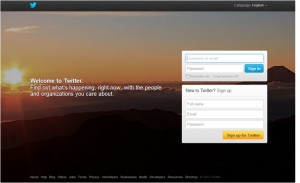Canadians who have taken to social media to actively talk about TV they’re watching – as they’re watching it – have become a widespread phenomenon. Described as “social TV viewers,” they represented 27% of online Canadians in the second quarter of 2012, according to our Digital Life Canada tracking study.

Social TV is industry lingo to describe social interaction that occurs between viewers as they watch TV. The interaction can include posts on Twitter and Facebook, plus conversations on new mobile apps that allow people to watch TV as well as connect with viewers and fans who have identified the same TV preferences.
On Facebook, for instance, the percentage of users who said they’ve posted a comment about a TV show jumped to 31%, up from 25% a year prior. A further 29% of them had “liked” a TV show, up from 26%. Fourteen percent have also “liked” a TV channel, up from 9%.
On Twitter, 17% posted a link to a video or clip from a TV show, up from 14% the year prior. As well, a quarter of them have posted a comment about a TV show on Twitter.
So who is the typical social TV viewer? They cross all demographics, but 88% of them are between the ages of 12 and 49 and the average age is 33. Social TV viewers are also slightly more likely to be female than male (54% versus 46%). There are also regional variances. Ontario accounts for 40% of the social TV viewers, followed by the West (31%), Quebec (19%) and the Atlantic provinces (10%).
Given the changing nature of how people watch TV, social TV represents an exciting new opportunity for content creators and broadcasters to build both audience advocacy and engagement. For advertisers and advertising agencies, the promise of social TV is to create ad executions and platforms for brands that integrate both broadcast and social media in a meaningful way.
The Digital Life Canada study shows when posting on social networks while watching TV, 27% of online Canadians said they were commenting about the content of a show; 16% were expressing how much they liked or loved a show; and 8% were commenting about a particular character or contestant on a reality show.
Looking at the data, Twitter has also become a legitimate vehicle for broadcasters to connect with their audiences. A quarter of Canadian Twitter users now follow a TV show on the social network, up from 21% the year prior. And 15% of them said they’ve tuned into a TV show as a result of being reminded by a tweet, up from 11% the year prior.
Still, new mobile apps that allow users to simultaneously watch TV content and connect with friends as well as fans of a program are in their infancy, with single-digit usage, at least in Canada.
GetGlue, an app that allows viewers to “check in” to a TV program they’re watching, has awareness of 10% among online Canadians, but only 3% have actually used the app. GetGlue was the top mobile app in the category, followed by iPeel also with 3% usage and brand awareness of 8%.
Technical: The results are based on a survey of 1,000 online Canadian consumers conducted in late summer 2012 as part of SRG’s quarterly Digital Life Canada tracking study.